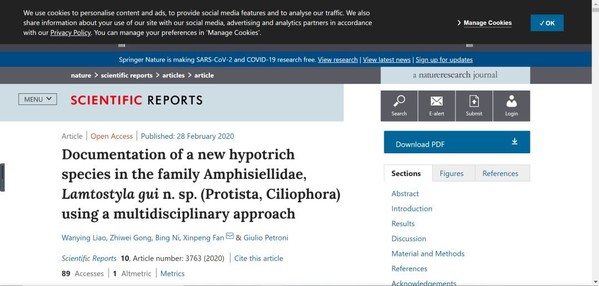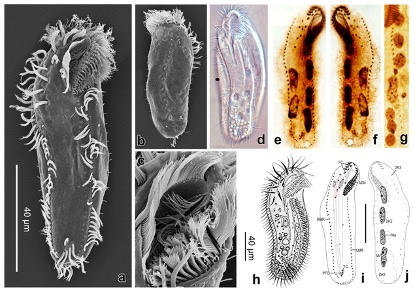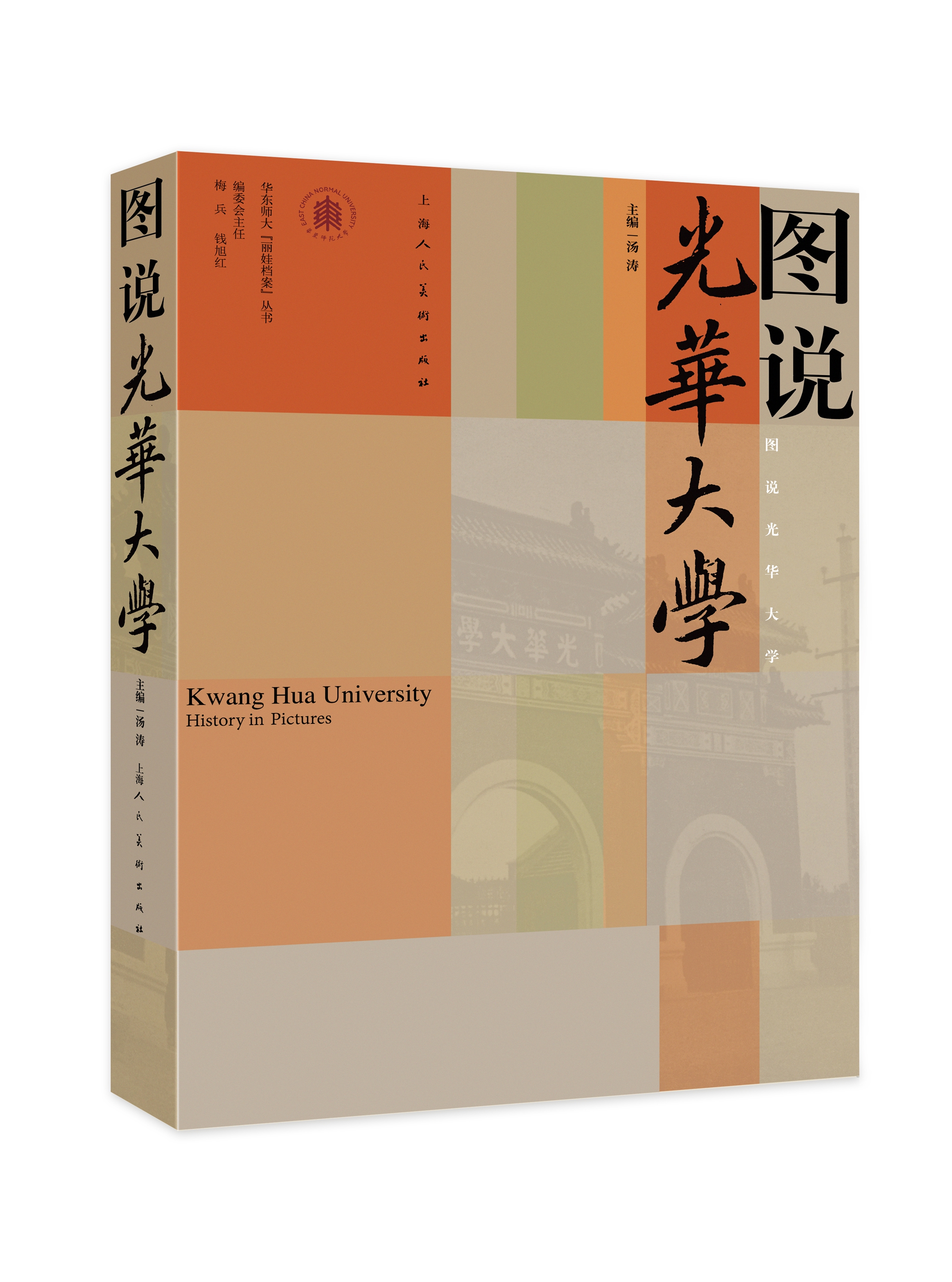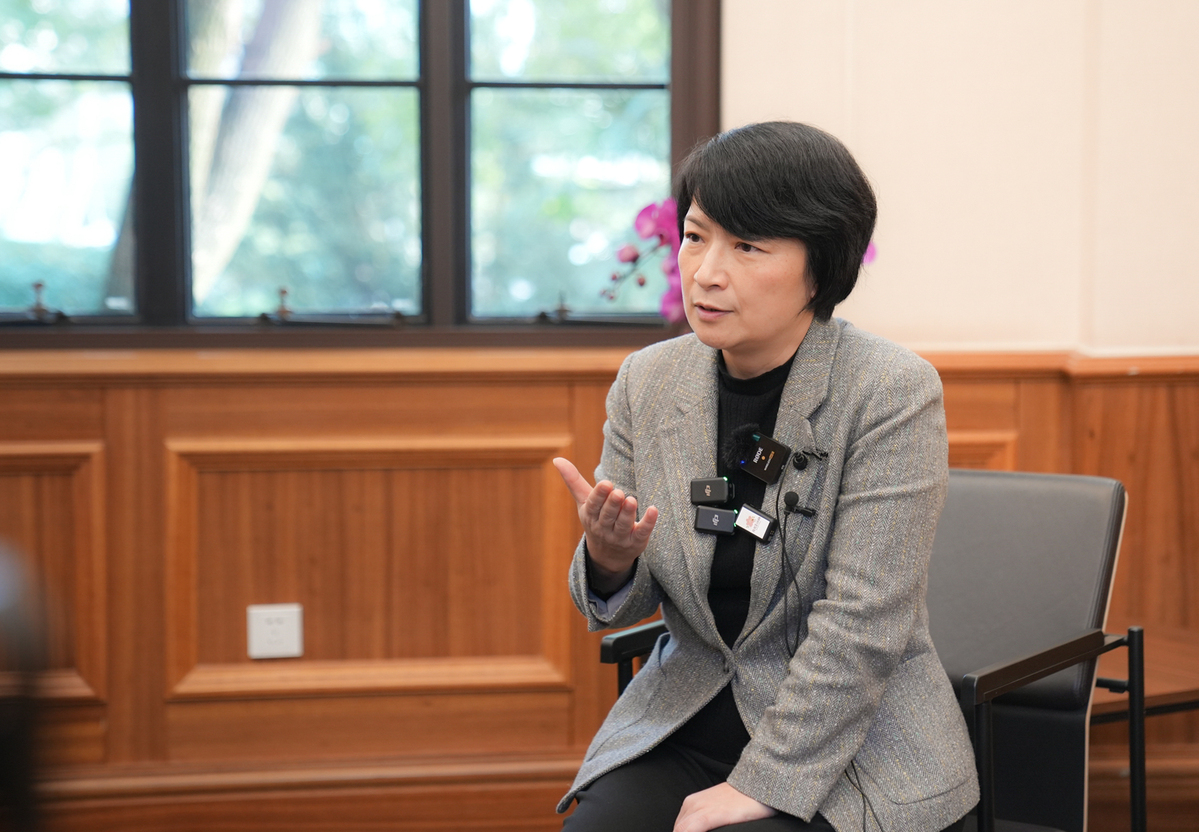The research team headed by Fan Xinpeng from the School of Life Sciences in ECNU finds a new species of ciliate protozoa on the Chongming Island. The new organism was named Lamtostyla gui with a specific epithet. “Gui” is specifically dedicated to Prof. GU Fukang, a well-known protozoologist and tenured professor of ECNU, for his outstanding contribution to protozoology. The study on the new organism was published recently in Scientific Reports.

The study on the new organism was published recently in Scientific Reports.

Prof.Gu Fukang
The wetland in the east of the Chongming Island is located at the junction area influenced by both brackish water and fresh water. It is an ecological transition zone that has bred rich biological diversity. Though the wetland has long attracted the attention of researchers in many fields, research on the taxonomy and diversity of protozoa is still scarce. In recent years, the Protozoology Research Group of the School of Life Sciences has carried out systematic investigations on this area, and gradually revealed the rich resources and unique fauna characteristics of ciliate protozoa in Chongming Island’s wetland.

The wetland on Chongming Island, Shanghai where Lamtostyla gui was collected
Protozoa are single-celled eukaryotes, and ciliates are the most developed division. Lamtostyla gui belongs to the group of ciliates with the most complex structure differentiation—the subclass Hypotrichia. Taxonomists characterize and distinguish different species based mainly on microscopic observations of features such as the general morphology of living organisms and the ciliary pattern of prepared specimen.

Morphology of Lamtostyla gui obtained using different methods (a-c: scanning electron microscopy; d-j: microscopy)

Ultrastructure of ciliature-associated microtubules and extrusive organelles of Lamtostyla gui(transmission electron microscopy)
The research group characterized the taxonomic features of Lamtostyla gui based on microscopic observations. Among the results, the description of the organelle fine structure is the first ultramicroscopic level recognition for the family Amphisiellidae, which provides evidence for summarizing the synapomorphy of the family in future phylogeny studies.
In this study, several marker gene sequences (including SSU rRNA, LSU rRNA, ITS, and COX) of L. gui were obtained, which alleviated the lack of public sources of ciliates marker genes in GenBank.
In addition, phylogenetic analysis locates the new species among ciliates and further confirms that the genus Lamtostyla is not monophyletic.
Read more: https://www.nature.com/articles/s41598-020-60327-5
Source: School of Life Science
Copy editors: Philip Nash
Editor: Yu Wenxi


















